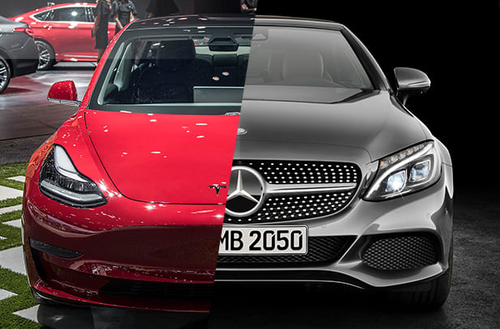An Inconvenient Truth: EVs May Offer A “Negligible” CO2 Difference From ICE Vehicles
Are the carbon footprints of EVs really as drastically lower than that of internal combustion engine vehicles? When considering the amount of carbon and CO2 created from assembling lithium ion batteries, one firm thinks the difference could be “negligible”.
Such was the topic of a new blog post by natural resource investors Goehring & Rozencwajg (G&R), a “fundamental research firm focused exclusively on contrarian natural resource investments with a team with over 30 years of dedicated resource experience.”
The firm, established in 2015, posted a blog entry entitled “Exploring Lithium-ion Electric Vehicles’ Carbon Footprint” this week, where they call into question a former ICE vs. EV comparison performed by the Wall Street Journal and, while citing work performed by Jefferies, argue that there could literally be “no reduction in CO2 output” in some EV vs. ICE comparisons.
Their analysis “details the tremendous amount of energy (and by extension CO2) needed to manufacture a lithium-ion battery.” Because a typical EV is on average 50% heavier than a similar internal combustion engine, the analysis notes that the “embedded carbon” in an EV (i.e., when it rolls off the lot) is therefore 20–50% more than an internal combustion engine.
The report notes:
Our analysis suggests a modern lithium-ion battery has approximately 135,000 miles of range before it degrades to the point of becoming unusable. An extended-range Tesla Model 3 has an 82 kWh battery and consumes approximately 29 kWh per 100 miles. Assuming each charge cycle has a ~95% round-trip efficiency and a battery can achieve 500 cycles before starting to degrade, we conclude a Model 3 can drive 134,310 miles before dramatically losing range.
Incidentally, Tesla’s Model 3 warranty covers the battery for the lesser of eight years or 120,000 miles and does not apply until the battery has degraded by at least 30%. If the Jefferies analysis is correct (and we believe it is), then an EV will reach carbon-emission parity with an internal-combustion vehicle just as its battery requires replacement. This will come as a huge disappointment for those believing that EV adoption will have significant impacts on CO2 reduction.
The blog post then goes on to critique a WSJ analysis that concluded it would only take 20,000 miles to “break-even” with an internal combustion engine:
First, it compares a Tesla Model 3 (a sedan) with a Toyota Rav4 (an SUV). An entry-level Honda Civic, which we believe is a more appropriate comparison, would improve the ICE fuel efficiency by 20%. Next, after consulting the footnotes, The Wall Street Journal article assumes 80 kg of CO2 emission per of battery. This estimate appears to come from a 2019 Swedish Energy Agency report in which they reduce their carbon intensity by half compared with the year prior.
The motivation for lowering their estimates was the use of “close to 100 percent fossil free energy […] which is not common yet, but likely will be in the future.” In other words, the cost and carbon-intensity of lithium-ion batteries is predicated on renewable energy which itself requires cheap and carbon-efficient lithium-ion batteries.
“Even if The Wall Street Journal figures are accurate, we believe most investors still do not appreciate how little the magnitude of potential carbon savings from lithium-ion EVs is,” G&R writes.
The post concludes with some starkly “inconvenient truths”: that if a global analysis was performed using figures put together by Jefferies, instead of those used by the Wall Street Journal analysis, “the difference would be negligible — there would be no reduction in CO2 output.”
Tyler Durden
Sat, 06/05/2021 – 20:00![]()
Zero Hedge’s mission is to widen the scope of financial, economic and political information available to the professional investing public, to skeptically examine and, where necessary, attack the flaccid institution that financial journalism has become, to liberate oppressed knowledge, to provide analysis uninhibited by political constraint and to facilitate information’s unending quest for freedom. Visit https://www.zerohedge.com
